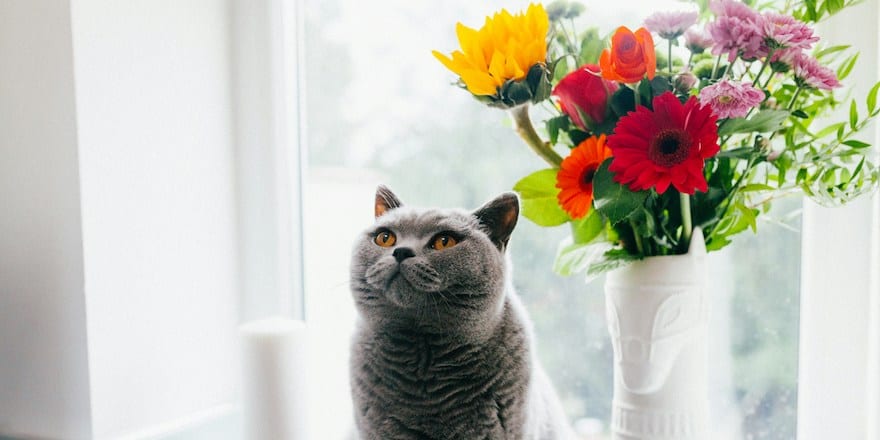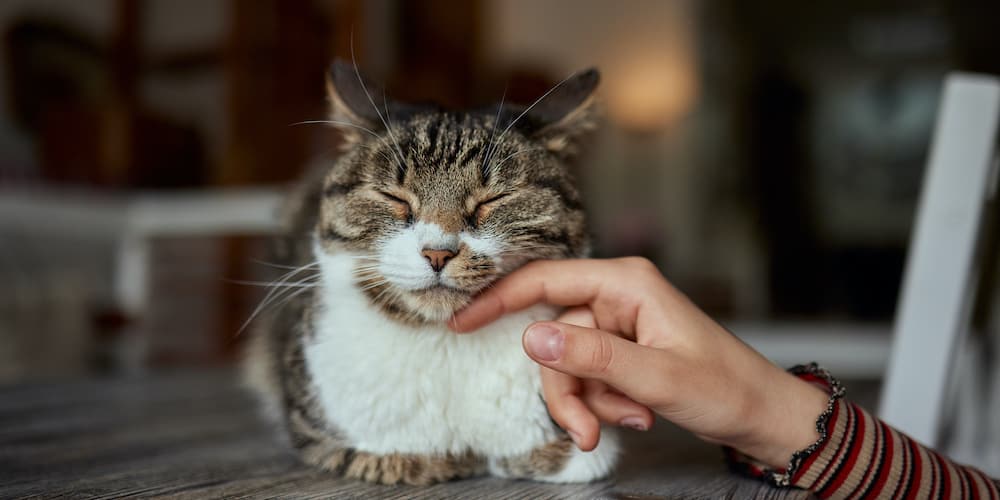Your cat should be considered ‘senior’ from the age of 8. From then on, its body changes progressively, just as ours does when we age.
Thus, your cat’s physical activity decreases, as does its appetite. These changes may be due to pain or a chronic disease. That’s why it becomes necessary to rethink your cat’s diet.
I recommend making an appointment with your veterinarian if your cat turns 8. A senior cat checkup is essential to assess its health and screen for age-related diseases.
Remember one word: prevention. Your senior cat should have a diet adapted to its new needs to prevent the onset of diseases and pain.
📚 Also read | The best cat food according to a veterinarian
What are the nutritional needs of the senior cat?
From 7 years old
The transition to advanced age for your little companion should be accompanied by certain changes in its habits, including diet.
Between 7 and 11 years of age, your cat has lower calorie needs. However, from 12 years on, its energy needs increase. This is due to changes in the functioning of its digestive system with age.
Beyond 10 years of age, your senior cat needs a diet rich in calories and in highly digestible proteins.
Slower digestion
Your cat’s intestinal transit may also be slowed. That’s why I recommend ensuring fresh water is available at all times and regularly checking whether your companion is constipated.
Your veterinarian can help you determine your cat’s energy needs by performing certain calculations. These are necessary to choose the right kibble for senior cats.
📚 Also read | A veterinarian has selected the best wet cat foods
What are the different types of senior cat food?
There are many types of kibble for senior cats. But be careful because not all are suitable for your cat.
Several factors should be taken into account in this choice. Is your little feline suffering from a chronic disease? Does it have joint pain? Is it overweight? This discussion should be carried out in consultation with your veterinarian.
An appropriate diet enables the older cat to avoid the onset of certain diseases, such as chronic kidney disease or hyperthyroidism, for example.
Additionally, besides kibble, there are also wet foods for senior cats. Higher in moisture than dry food, they are also suitable for aging cats.

What do they contain?
Antioxidants
Generally, kibble for older cats is formulated to preserve the proper functioning of their bodies to counteract the effects of aging.
Thus, this kibble contains antioxidants, such as lycopene or vitamin E. These compounds limit cellular aging and help the organs continue to function properly.
Omega-3s
Other ingredients, such as polyunsaturated fatty acids, particularly omega-3s, should be prioritized.
They help protect your cat’s joints through their anti-inflammatory effect. These fatty acids are essential for preventing osteoarthritis.
Flavor enhancers
With age, the senses also function less effectively. This is the case for taste and smell.
Your cat may then “turn up its nose at” its usual food, which seems less appetizing. Some senior cat kibbles therefore contain flavor enhancers to stimulate their appetite.
A suitable texture
In addition to the kibble’s composition, their texture is also worth considering. An older cat is more prone to dental problems, for example.
To make eating easier with fragile teeth, some kibbles have a softer texture and are therefore easier to chew.
What are the benefits of senior cat food?
Prevent age-related weight loss
First of all, your cat may gradually lose weight as it ages. Many reasons can explain this: the onset of a chronic disease, the presence of hairballs in the stomach, or dental pain.
Senior cat kibbles are formulated to address these changes in their body.
Additionally, food intake in senior cats can naturally decrease. I therefore recommend giving your cat more meals in smaller portions and regularly monitoring their weight.
Improve their quality of life
As your cat ages, their organs become more fragile, as do their joints.
An age-appropriate diet helps maintain their health. Osteoarthritis is one of the conditions that should be taken into account because of the pain it can cause.
To improve your cat’s quality of life, a good diet helps prevent potential pain, whether in their joints or their teeth.
A small tip to determine if your cat is in pain: I recommend observing their behavior closely and recording their movements. A camera in your home can help you notice a decrease in mobility or difficulties jumping. Don’t hesitate to show the footage to your veterinarian.
Prevent the onset of diseases
Your cat may be more prone to certain diseases of older cats, including kidney, urinary, or heart diseases. To learn more about the risks and diseases of senior cats, you can consult the guidelines of the American Association of Feline Practitioners (AAFP).
Kibble specifically designed for certain conditions in older cats is now available on the market.
Indeed, some so-called therapeutic diets are fully part of the medical management of certain conditions. You therefore understand the importance of your veterinarian detecting a disease early.
Finally, keep in mind that cats age faster than humans. That’s why I recommend scheduling a senior cat check-up with your veterinarian at least once a year, more often if necessary, always for preventive purposes.
Sources and scientific studies
Bouzouraa Tarek, ‘The AAFP recommendations for the care of senior cats’, La Semaine Vétérinaire, no. 1924, 10/12/2021
Ray Michael et al., ‘2021 AAFP Feline Senior Care Guidelines’, Journal of Feline Medicine and Surgery, volume 23, July 2021, pp. 613-638.



